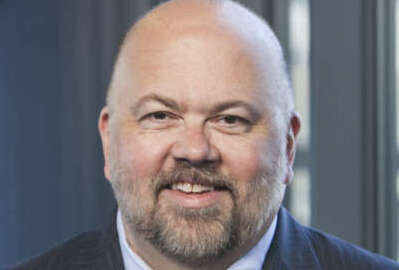
Another approach for refocusing OPM
The former DHS CHCO says there are other options for OPM that would be easier to implement, accomplish similar results and gain more support from both sides of ...
This column was originally published on Jeff Neal’s blog, ChiefHRO.com, and was republished here with permission from the author.
Last week, the administration released its government reorganization plan, including a proposal that would substantially eliminate the Office of Personnel Management as an independent agency. In my post on the proposal, I suggested that it should not be dismissed out of hand. I also suggested that any reform of OPM be bipartisan. OPM’s role in the civil service is significant and whatever happens to it should be viewed as credible by the public and by the federal workforce.
Related Stories
Although I would not dismiss the administration’s proposal, I believe there are other options for OPM that would be easier to implement, accomplish similar results and gain more support from both sides of the aisle. Here are some of the issues regarding OPM that should be addressed, along with my recommendations.
Politicizing the Civil Service. One criticism of the administration’s proposal is that it would politicize the civil service by putting civil service policy in the Executive Office of the President (EOP). I am not sure that is what would actually happen. Procurement policy is in EOP in the Office of Management and Budget, and we do not see widespread criticism that it has been politicized due to its location. In fact, during the Obama administration, some matters related to the Senior Executive Service were handled by the Office of Presidential Personnel. That move was also criticized by many as politicizing civil service matters, but there was no indication that was the result. I am not convinced that moving workforce policy to EOP would result in a politicized workforce. However, because we need civil service reform, and it must be credible, I believe the best solution is keep OPM as a significantly reformed independent agency.
Background Investigations. The background investigation program is the largest part of OPM. It generates and spends more than $1.4 billion annually and has more than half of OPM’s employees. background investigations are not the reason OPM exists, nor is it necessary to have them housed in the government’s HR agency. Moving the entire unit to the Department of Defense is a sound idea. The entire security clearance process should be revamped, and putting all of it in DoD makes it more likely that reform can happen. OPM does not have the organizational clout to drive that reform — DoD does.
Health and Life Insurance and Retirement. These programs are an integral part of any workforce strategy. They make up a significant portion of employee compensation. For those reasons, I believe the best approach is to keep them in OPM. Moving them to the General Services Administration separates them from the policy decisions, while finding another home for them in the Social Security Administration puts them in an agency where they are not aligned with the core mission. I agree with the administration’s stated belief that alignment of missions and reduction or elimination of duplication is a good idea. In this case, the programs are not really related to anything in the other agencies.
Reimbursable Services. OPM provides a variety of other reimbursable services. Some, such as advertising jobs for agencies, are directly related to the core mission and have been part of OPM’s responsibilities since the Civil Service Commission was created. Others are of more recent origin and could be (and are) performed by any agency that offers administrative services. There is a legitimate argument that OPM is selling services where it makes policy and provides oversight, thereby constituting an organizational conflict of interest. I know many of the people involved in selling those services and know they would not deliberately try to use the policy and oversight functions to provide an advantage to their agency. In addition to the perceived conflict of interest, there is also another advantage that OPM and other federal agencies have over their private sector competition. They can sell services via an interagency agreement, where the private sector has to go through the contracting process. Interagency agreements are far less complicated and time-consuming, so federal agencies that sell services to other agencies have a big advantage. Rather than simply moving reimbursable services to GSA or another agency, I believe any such move should begin with a review of administrative services that agencies (not just OPM) sell to one another. We may find that there are good reasons for the practice for some services, but not for others. Once that review is complete and we know what businesses the government should be in, we would have a better idea how and where the remaining services should be handled.
Oversight. The administration’s proposal does not adequately address how oversight of agency HR programs would be conducted. Agencies may not appreciate OPM’s oversight role, but a merit-based system requires some degree of oversight to ensure agencies are not running programs that violate merit system principles. It may be difficult for the White House to run that kind of oversight directly. I have heard comparisons of HR programs to procurement and, in some respects, that is a valid comparison. In addition to policies written by the Office of Federal Procurement Policy (located in OMB, which is in EOP), companies can protest contract awards via the Government Accountability Office. That protest process is a crucial component of the procurement process. Because there are millions of job applications filed every year, there is not a similar process that works effectively for the entire government. Agencies conduct limited oversight reviews of their own HR operations and OPM conducts reviews, either alone or in conjunction with agency oversight offices. The current process is better than nothing, but it is not great. OPM simply does not have the resources to conduct thorough reviews and it is unlikely to ever be given enough resources. That is one of several areas where the significantly expanded use of data that the administration proposed could make a big difference.
Policy. The most crucial function of OPM is policymaking. OPM regulations and policies are the reason the agency exists. The administration’s proposal accurately indicates there are shortcomings in policy development. When statutory changes generate a requirement for new policy, OPM can take as much as two to three years to get final rules in place. Competing effectively in today’s labor market requires a far more responsive capability. One reason for the weakness in policy development is the shortage of resources. OPM’s 2018 budget includes 192 FTE for the Employee Services unit where governmentwide hiring, SES, classification and pay policy are written. That means about 3 percent of the total FTE is devoted to policy in the areas that are most directly related to the government’s hiring and pay issues. With that level of resourcing it is surprising that policy development can get done at all.
Elevating the Status of OPM. The administration’s proposal rightly intends to elevate the status of the workforce policymaking function. Another option for accomplishing that goal would be for President Donald Trump to grant Cabinet status to the director of OPM, as President Bill Clinton did during his administration. It is entirely up to the president and would require no action by Congress.
A reorganized OPM that does not have background investigations and has reduced volume of reimbursable services would be reduced from 6,375 FTE (based on the annualized 2018 Continuing Resolution) to about 2,500. If the overhead costs were thoroughly scrubbed, the agency could most likely identify more FTE that could be transferred from those functions to policy. If the agency identified better means of conducting oversight based on reviews of data rather than the traditional onsite audits of agencies, they could probably identify even more resources to put into policy and analysis.
I believe such an approach would gain more support in Congress than we will see for abolishing the agency. It could address many of the administration’s concerns, while keeping the work in an independent agency and moving the more commercial services into the private sector.
Jeff Neal is a senior vice president for ICF and founder of the blog, ChiefHRO.com. Before coming to ICF, Neal was the chief human capital officer at the Homeland Security Department and the chief human resources officer at the Defense Logistics Agency.
Copyright © 2024 Federal News Network. All rights reserved. This website is not intended for users located within the European Economic Area.






